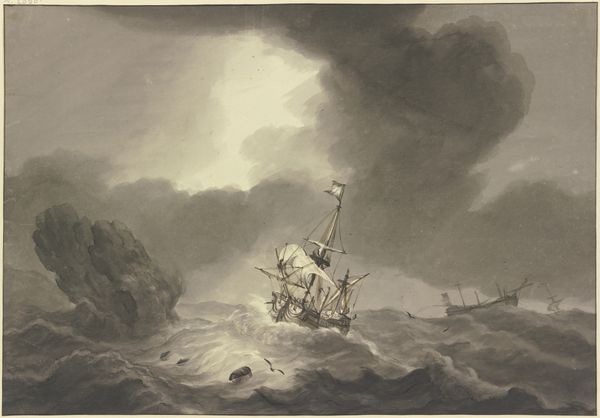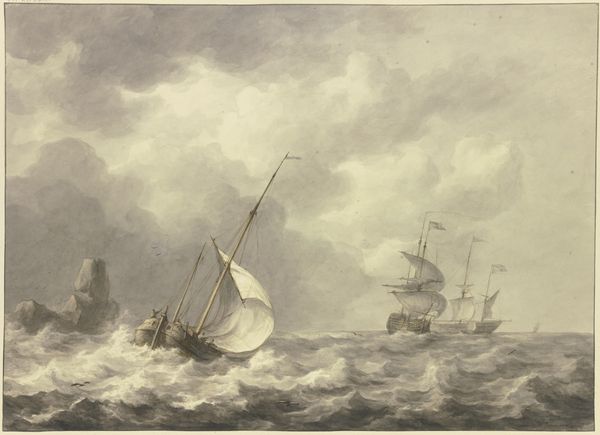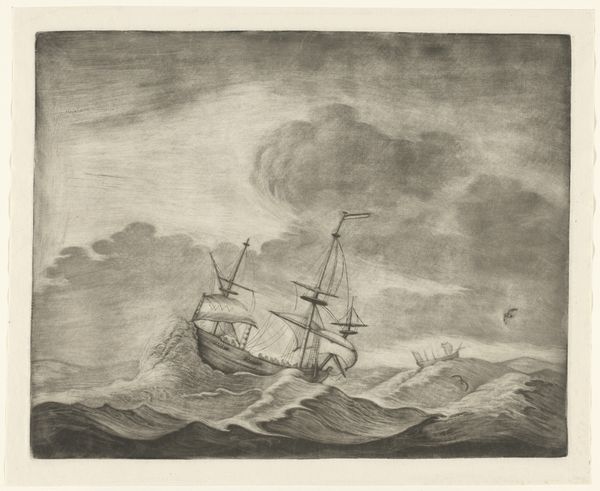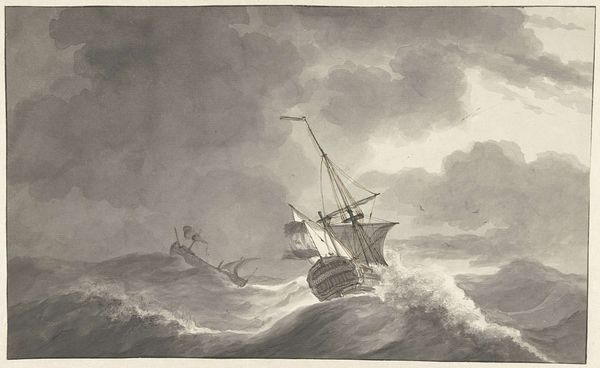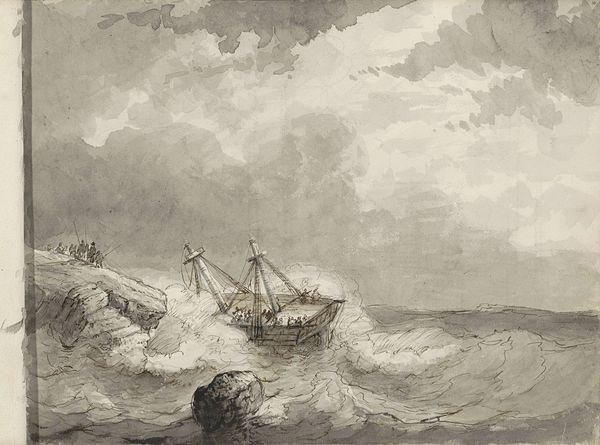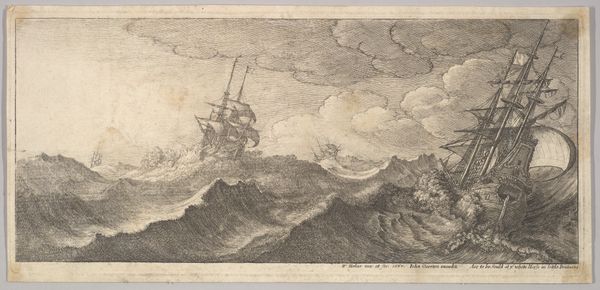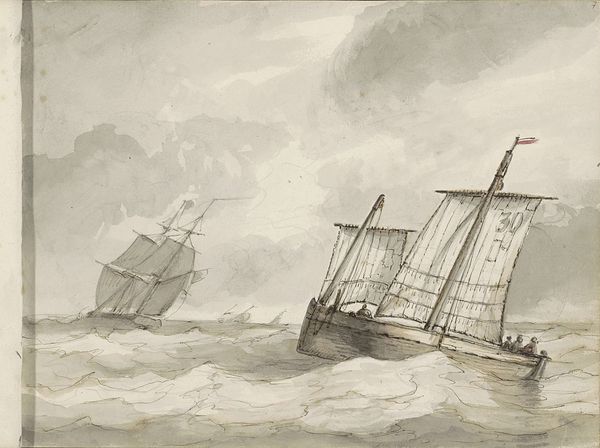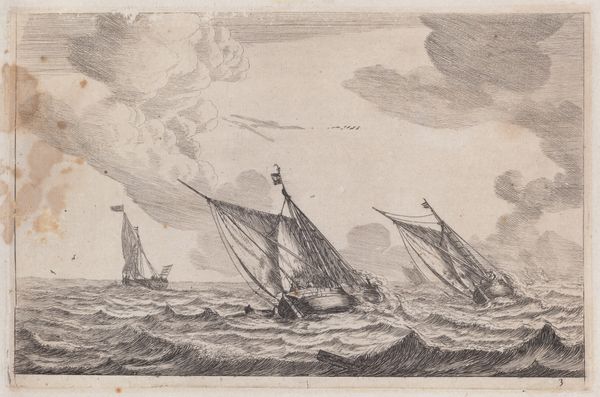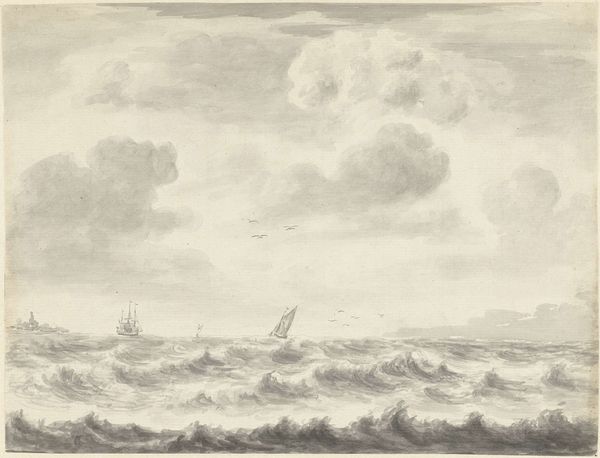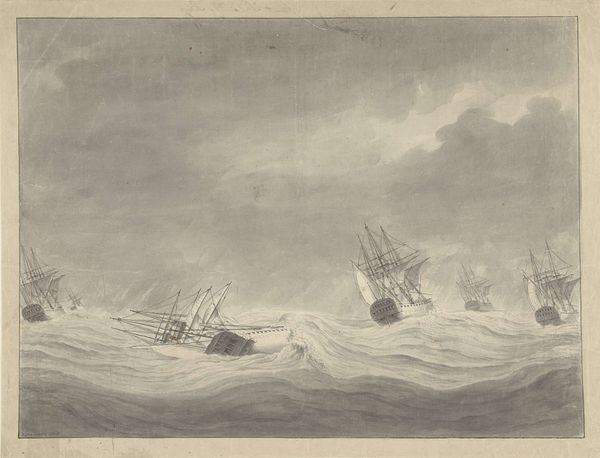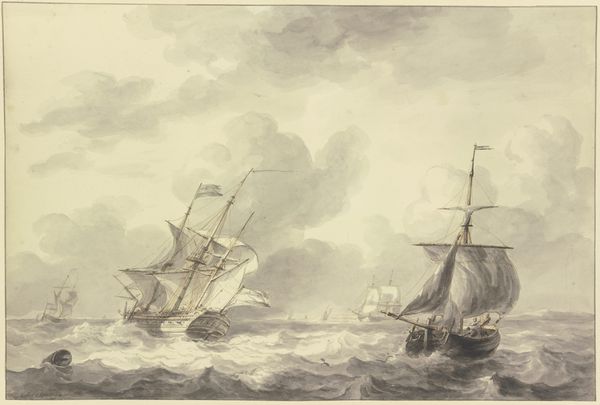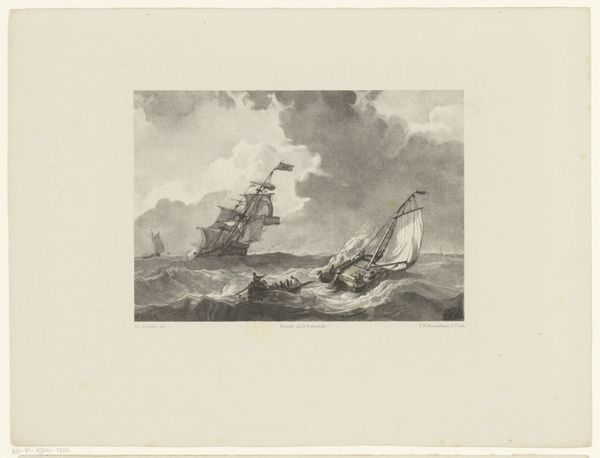
drawing, pencil
#
drawing
#
landscape
#
pencil drawing
#
romanticism
#
pencil
#
realism
Dimensions: sheet: 25 × 35.8 cm (9 13/16 × 14 1/8 in.)
Copyright: National Gallery of Art: CC0 1.0
Editor: This drawing, "Ships in a Stormy Sea" by Petrus Johannes Schotel, circa 1840, powerfully captures the raw energy of the ocean. I’m immediately struck by the contrast between the fragility of the ships and the immense power of the waves. What do you see in this piece? Curator: I see a dramatic visualization of human vulnerability against nature's might. Water is one of the primal elements, often symbolizing chaos or the subconscious, a force beyond our complete understanding or control. Note the visual weight given to the clouds - an imbalanced image in grayscale that creates dramatic unrest. Do you find any comfort within it? Editor: Not particularly comfort, more of an unsettling beauty, a kind of awe and terror combined. Is there something particular about ships that makes them such compelling symbols? Curator: Absolutely. Historically, ships represent journeys, trade, exploration, and conquest - all potent concepts within cultural memory. A ship in a storm then becomes a metaphor for life's struggles, our personal storms, and humanity's ongoing battle with forces beyond its power. Do you think we feel the same way about images like this now as they did then? Editor: That's interesting, I imagine their immediate concerns with shipwrecks were much more material, about trade or warfare. For us, removed from that reality, it feels more existential? Curator: Perhaps. But remember symbols adapt. Even our modern understanding of existential struggle carries the weight of those historical anxieties. It's all interconnected; we look at these ships and inherit the hopes and fears of those who sailed them. This visual language constantly evolving. Editor: That makes so much sense. It's like the drawing becomes a vessel carrying meaning through time. Curator: Precisely. Visual memory and cultural memory blend, offering insights into past struggles. That invites deeper reflections on our own, contemporary anxieties.
Comments
No comments
Be the first to comment and join the conversation on the ultimate creative platform.
